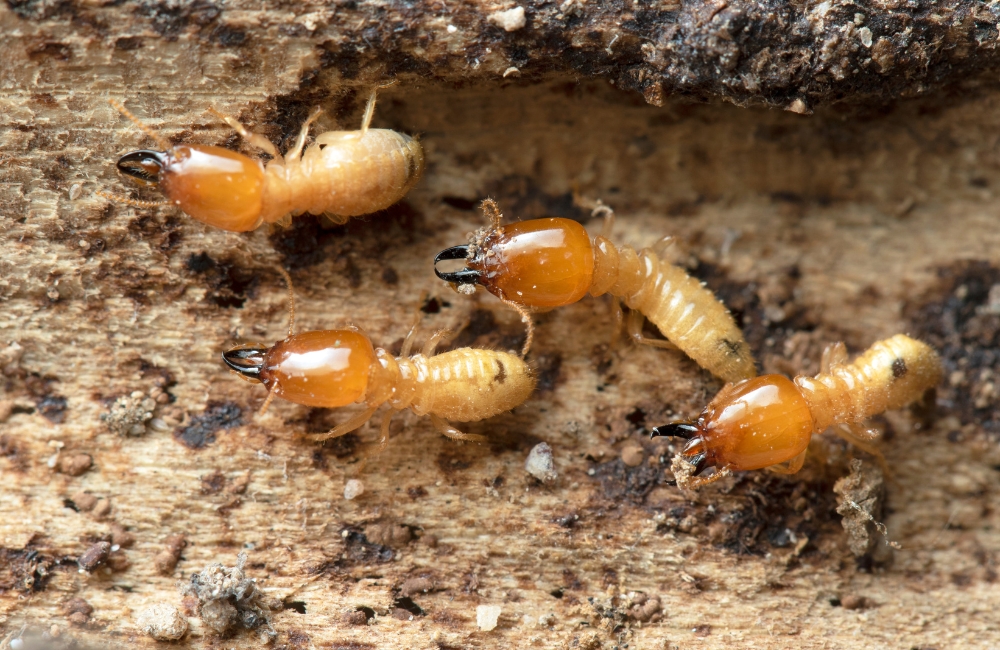Termites are often called “silent destroyers” because they can cause significant damage to your home before you even realize they’re there. As a homeowner, protecting your property from these destructive pests is crucial to maintaining its value and safety. One of the most effective ways to prevent termite damage is through regular termite inspections. In this essential guide, we’ll walk you through everything you need to know about termite inspections, from why they’re important to how to prepare for one.
What Are Termites?
Termites are small, social insects that primarily feed on wood and other cellulose-based materials, making them a significant concern for homeowners. In Australia, termites are commonly known as “white ants” and are a pervasive threat to wooden structures. The two most common types of termites in Australia are subterranean termites and drywood termites. Subterranean termites live in colonies beneath the soil and require moisture, whereas drywood termites establish nests within the timber itself and do not need soil contact to survive.
Both types of termites can cause extensive damage to your home, especially if left unchecked for an extended period. Termites typically enter homes through cracks in the foundation or along wooden structures. Once inside, they begin feeding on the wood, weakening the structure and creating holes and tunnels that compromise its integrity.
Why Are Termite Inspections Important?
Termite infestations are not always visible to the naked eye. In fact, termites can silently feed on the wood in your home for months or even years before you notice any signs of damage. This is why regular termite inspections Gold Coast are crucial to protecting your home from significant damage. Here’s why they are essential:
- Early Detection Prevents Extensive Damage
The earlier termites are discovered, the easier and cheaper it is to control and eradicate the infestation. If termites are allowed to infest your home unchecked, the damage they cause can become expensive and difficult to repair. - Insurance and Financial Protection
Many homeowners’ insurance policies do not cover damage caused by termites. Regular inspections can help catch infestations before they result in costly repairs that are not covered by your policy. - Preserve Your Property’s Value
Termite damage can significantly reduce the resale value of your home. By keeping up with termite inspections, you can preserve the long-term value of your property. - Peace of Mind
Knowing that your home has been thoroughly inspected and that there are no active termite infestations can give you peace of mind, especially if you’re considering selling your home or renovating it.
What Happens During a Termite Inspection?
A professional termite inspection typically involves a thorough assessment of both the interior and exterior of your home. Here’s what you can expect during the inspection:
- Exterior Inspection
The inspector will examine the perimeter of your home for signs of termite activity. This includes checking for mud tubes (which termites use to travel), damaged wood, and any other visible signs of infestation. They may also inspect areas around the foundation, gutters, and crawl spaces. - Interior Inspection
Inside your home, the inspector will check wooden structures, walls, ceilings, and floors for any evidence of termite damage. This includes listening for hollow sounds in the wood, checking for discoloration, or examining any visible signs of swarming insects. - Moisture Check
Since termites require moisture, the inspector will look for areas of excessive humidity, such as leaky pipes or areas with poor ventilation. Moisture problems can attract termites, so addressing these issues may help prevent future infestations. - Wood Inspection
The inspector will look for any damage to wooden elements like beams, doors, and window frames. They may tap or prod wood to detect hollow areas, a common sign of termite feeding. - Detailed Report
After the inspection, the pest control company will provide a detailed report outlining any findings. If termites are detected, they will suggest a course of action, such as treatment options or preventive measures.
How Often Should You Schedule a Termite Inspection?
The frequency of termite inspections depends on several factors, including your location, the age of your home, and the environmental conditions that may favor termite activity. However, most experts recommend having a professional termite inspection at least once a year.
If you live in an area with high termite activity, you may need to schedule more frequent inspections. Additionally, if you’ve had a past termite infestation, it’s important to keep a close eye on your home and have it inspected more often.
DIY vs. Professional Termite Inspections: Which Is Best?
While it’s possible to look for some early signs of termite activity yourself, such as mud tubes or damaged wood, DIY inspections have limitations. Termites can live inside your walls or in areas that are hard to access without professional tools and expertise.
Here are some reasons why you should consider hiring a professional pest control service for your termite inspection:
- Expertise and Experience: Gold Coast Pest control professionals have the training and experience to spot signs of termite activity that the average homeowner might miss.
- Advanced Equipment: Professionals often use specialized tools like moisture meters, infrared cameras, and termite detection systems to locate infestations that are hidden from view.
- Accurate Reporting: A licensed pest control company can provide an accurate, comprehensive report and recommend the most effective treatment methods for your specific situation.
While a DIY inspection may give you a general idea of the state of your home, hiring a professional ensures a thorough and detailed examination.
Preparing for a Termite Inspection
To ensure that the inspection goes smoothly, there are a few steps you can take to prepare:
- Clear the Area Around the Home: Trim back any bushes or trees that may be blocking access to the exterior of your home. This will help the inspector assess the perimeter more easily.
- Access to Crawl Spaces and Attics: Ensure that areas like basements, crawl spaces, and attics are accessible for the inspector. If necessary, remove any items that may block access to these spaces.
- Inform the Inspector of Past Issues: If you’ve had a previous termite problem or any other pest-related issues, make sure to mention this to the inspector.
What Happens If Termites Are Found?
If your inspector discovers signs of a termite infestation, don’t panic. There are several effective treatment options available, such as:
- Liquid Termiticides: These are applied around the foundation of your home to create a barrier that prevents termites from entering.
- Baiting Systems: These involve placing termite bait stations around your property that attract termites and ultimately kill them.
- Fumigation: For severe infestations, fumigation may be necessary. This involves sealing your home and releasing a gas that targets the termites inside.
Your pest control company will recommend the best course of action based on the severity of the infestation.
Conclusion
Termite inspections are a critical part of home maintenance that can help protect your property from costly damage and preserve its value. By scheduling regular inspections with a professional pest control service, you can catch termite problems early and take the necessary steps to prevent further damage. Whether you’re a first-time homeowner or have lived in your property for years, understanding the importance of termite inspections and the process behind them is key to safeguarding your home.
Remember, termites can be sneaky, but with the right knowledge and a proactive approach, you can protect your home from these destructive pests. Don’t wait for signs of damage—schedule a termite inspection today to keep your home safe and secure for years to come.





